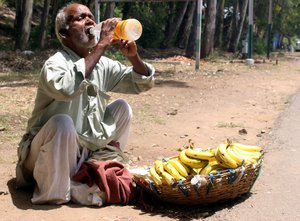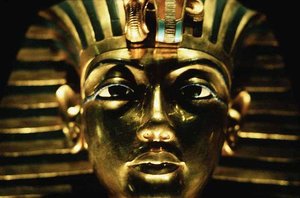- published: 16 Mar 2016
- views: 36882
-
remove the playlistCity
- remove the playlistCity
- published: 14 Aug 2015
- views: 327502008
- published: 16 Mar 2016
- views: 21726
- published: 21 May 2016
- views: 1016
- published: 20 May 2016
- views: 109
- published: 20 May 2016
- views: 33930
- published: 19 May 2016
- views: 19158
- published: 21 May 2016
- views: 693
- published: 19 May 2016
- views: 10848
- published: 19 May 2016
- views: 1248

Darkhan (Mongolian: Дархан, blacksmith) is the third-largest city in Mongolia and the capital of Darkhan-Uul Aimag (Darkhan-Uul Province). It has a population of 74,738 (as of 2010).
Ground was broken on October 17, 1961, and the city was built with extensive economic assistance from the Soviet Union. As its name implies, the city was originally conceived to be a manufacturing site for Mongolia's northern territory. The city remains a mostly industrial region and is the home of some 82% of the aimag's population. As with most urban Mongols, some 86% of the city's population live in residential apartments, with the remaining population living in yurts (gers) on the outskirts of the city. The city is relatively close to Russia and retains a fairly small percentage of native Russians.
Darkhan has a borderline humid continental climate (Dwb), close to the more typical subarctic climate (Dwc) of northern Mongolia, which is found in higher areas near the city, and only marginally wet enough to avoid qualifying as a semi-arid climate (BSk). These three climate types tend to overlap a good deal over the border regions of Mongolia, Russia and Kazakhstan. This area has extremely cold and dry winters; however the summers are warmer and more humid.
This article is licensed under the Creative Commons Attribution-ShareAlike 3.0 Unported License, which means that you can copy and modify it as long as the entire work (including additions) remains under this license.

A city is a relatively large and permanent settlement. Although there is no agreement on how a city is distinguished from a town within general English language meanings, many cities have a particular administrative, legal, or historical status based on local law.
For example, in the U.S. state of Massachusetts an article of incorporation approved by the local state legislature distinguishes a city government from a town. In the United Kingdom and parts of the Commonwealth of Nations, a city is traditionally a settlement with a royal charter. Historically, in Europe, a city was understood to be an urban settlement with a cathedral.
Cities generally have complex systems for sanitation, utilities, land usage, housing, and transportation. The concentration of development greatly facilitates interaction between people and businesses, benefiting both parties in the process. A big city or metropolis usually has associated suburbs and exurbs. Such cities are usually associated with metropolitan areas and urban areas, creating numerous business commuters traveling to urban centers for employment. Once a city expands far enough to reach another city, this region can be deemed a conurbation or megalopolis.
This article is licensed under the Creative Commons Attribution-ShareAlike 3.0 Unported License, which means that you can copy and modify it as long as the entire work (including additions) remains under this license.
- Loading...

-
 2:36
2:36Alkaline - City
Alkaline - City -
 4:26
4:26R. City - Locked Away ft. Adam Levine
R. City - Locked Away ft. Adam LevineR. City - Locked Away ft. Adam Levine
R. City's debut album "What Dreams Are Made Of" Available NOW! Get it on: Apple Music: http://smarturl.it/RCityEPi?IQid=yt Stream On Spotify: http://smarturl.it/RCityEPs?IQid=yt Google Play: http://smarturl.it/RCityEPg?IQid=yt Amazon: http://smarturl.it/RCityEPa?IQid=yt Follow R. City: https://twitter.com/rcity https://www.facebook.com/RCity https://instagram.com/rcity/ http://everythingrcity.com -
 2:37
2:37Alkaline - City (Raw) - March 2016
Alkaline - City (Raw) - March 2016Alkaline - City (Raw) - March 2016
Alkaline - City (Raw) - New Level Unlocked - DJ Frass Records - Zojak Worldwide Distribution - March 2016 PRE-ORDER ALKALINE NEW LEVEL UNLOCKED ALBUM ON ITUNES NOW & SUPPORT THE MOMENT - https://itunes.apple.com/ca/album/new-level-unlocked/id1091349873 WEBSITE: http://www.dancehallhits.com/ My Instagram: http://instagram.com/iamthedopeboi FACEBOOK: http://www.facebook.com/pages/Danceha... FOLLOW: http://twitter.com/#!/DopeboiMuzik Alkaline - City (Raw) Alkaline - City (Raw) Alkaline - City (Raw) Alkaline - City (Raw) Alkaline - City (Raw) Alkaline - City (Raw) Alkaline - City (Raw) Alkaline - City (Raw) -
 12:05
12:05Girl In The City | Episode 4 | Between The Cheats | bindass
Girl In The City | Episode 4 | Between The Cheats | bindassGirl In The City | Episode 4 | Between The Cheats | bindass
This is officially Meera's worst day in Mumbai, watch Episode 4 of Girl In The City to find out why! Presented by #CastrolActivScooter #ChalUdteHain Powered by eBay India Radio Partner Red FM Girl in the City is the story of 21 year old Meera Sehgal, who moves to Mumbai from Dehradun, for an internship in a fashion house to live her dream of working in the fashion industry! Like most girls at her age, Meera is on a strict timeline; 3 months to achieve her dreams, she explores the city with her beloved scooter, MIA who helps her keep pace with the city, her work and all the excitement & adventures in her new life! ►SUBSCRIBE To bindass: http://bit.ly/1bfqpUb For More Videos & Downloads visit bindas: http://www.bindass.com ►Keep up with bindass on: Facebook: https://www.facebook.com/bindass Twitter: https://twitter.com/bindasstv Google+: https://plus.google.com/+bindass Instagram: http://instagram.com/bindasstv ▶Watch more popular shows on bindass: Life Lafde Aur Bandiyan - A sitcom where three college friends from Delhi are tired of being made fun of and want to become popular while going through some hilarious and memorable events! ►http://bit.ly/1RDzF2o Kota Toppers - A sitcom set against the backdrop of the high-pressure world of competitive engineering exams, the series follows the misadventures of six fren-emies from diverse backgrounds coming to Kota with one dream: to top the IIT entrance exam! ►http://bit.ly/1YAog7o Tu Con Main Con - It is a fun filled series of an unusual pair of lovable cons who do the wrong thing, but for all the right reasons. ►http://bit.ly/1NKZRXs Sun Yaar Try Maar - A series for those who are in love & need an extra push to take a chance in their love stories ►http://bit.ly/1ZoCScm Yeh Hai Aashiqui Siyappa Ishq Ka - A series of love stories for the new generation that take place at different points of their lives. ►http://bit.ly/1MvnIJ1 Emotional Atyachaar Season 5 - Tehqiqaat Yaaron Ke Saath! Loyalty will be put to the test with every episode weaving together elements of unpredictable scenarios; entertaining investigative skills and eye-opening stories as friends will team up to save their friend from being cheated ►http://bit.ly/1DHcD6G Yeh Hai Aashiqui - Featuring unique love stories, Yeh Hai Aashiqui is a show centered on the theme of 'love against all odds'. ►http://bit.ly/1yNiecX Best of Yeh Hai Aashiqui: http://bit.ly/1J5nVWQ Zindagi Wins - Dr.Aaliya's Dil ka Magic ya Dr.Malvika's Medicine ka logic, Zindagi Wins, always ►http://bit.ly/1E5ofll ►Bollywood Republic - The Folk Mix: http://bit.ly/1zFlYIl Halla Bol - Inspiring Young Indians to Fight Back! Halla Bol is a show that represents the inner power of every girl, encouraging her to be fearless and fight back! ►Halla Bol Season 1: http://bit.ly/1EmODt0 ►Halla Bol Season 2 - http://bit.ly/1bo4vif Pyaar Ka The End - The Show highlights how situations where emotions and anxieties of the youth lead them astray and they end up committing acts that they later repent, leading to severe repercussions. ►http://bit.ly/1GdxBuP Love By Chance - Here comes bindass Love By Chance - A quirky romantic comedy which will showcase true stories of people who have found love through serendipity!Kyuki Yeh 'Love By Chance' Hai Kuch Bhi Ho Sakta Hai! ►http://bit.ly/1zFmwxQ -
 2:35
2:35MANCHESTER CITY'S TOP 5 SAVES OF 2015-16
MANCHESTER CITY'S TOP 5 SAVES OF 2015-16MANCHESTER CITY'S TOP 5 SAVES OF 2015-16
Check out what we think are the top 5 saves from the 2015-16 season excluding Champions League. Do you agree with our choices? Subscribe for FREE and never miss another Man City video. http://www.youtube.com/subscription_center?add_user=mcfcofficial Register with City to receive even more official content and exclusive offers https://www.mcfc.co.uk/Supporters/Registration http://www.mcfc.co.uk http://www.facebook.com/mcfcofficial http://www.twitter.com/mcfc -
 4:39
4:39Lego City 60010 Fire Helicopter - Lego Speed Build
Lego City 60010 Fire Helicopter - Lego Speed BuildLego City 60010 Fire Helicopter - Lego Speed Build
Do you want to see more LEGO Speed Build videos from BrickBuilder? Subscribe this channel and see all new lego sets as the first! On my channel is all most popular lego series such as Chima, Trains, City, Ninjago, Creator, Star Wars, Movie, Super Heroes, Hobbit and other awesome lego sets! The factory is ablaze! Fly the LEGO® City Fire Helicopter in to bring it under control! Hover into position and lower the brave firefighter down with the LEGO Power Functions winch. Put out the flames with the onboard water cannon before the whole factory goes up in smoke! The LEGO City firefighters are always ready to save the day! Includes 2 minifigures: a pilot and a firefighter with fire extinguisher. Pieces: 232 pcs Ages: 5 - 12 Price: $39.99, £29.99 ► Lego City 2016 playlist https://www.youtube.com/watch?v=tz0A4cM0epA&list;=PLs4268aeskjnwe9qVbVQIDXs8oEv-dnjw ► Lego City (all) playlist https://www.youtube.com/watch?v=UYv3OD9D9o0&list;=PLs4268aeskjn6Fzus19eby5mx7z7QSplm Other favourite Lego series: ► Lego City Arctic playlist https://www.youtube.com/watch?v=bxhXhG0DD5c&list;=PLs4268aeskjkvZHoJ67h18ZjU48cAKw0v ► Lego Chima playlist https://www.youtube.com/watch?v=Tsf80LaZSR0&list;=PLs4268aeskjlQbYNyGdQ0tLTqlg04SSH- ► Lego Ninjago playlist http://www.youtube.com/watch?v=HeP2-yeIoN8&list;=PLs4268aeskjk0YLUoWamDDupWoBFhBoZu ► Lego Super Heroes playlist http://www.youtube.com/watch?v=1tj4VMdwRJU&list;=PLs4268aeskjluhfwh99YhOQ2PUP4L9fU4 ► Lego Technic playlist http://www.youtube.com/watch?v=2abfV8irZFw&list;=PLs4268aeskjlVWpw1odpaxckLrB7Pg4Lp ► Lego Star Wars playlist http://www.youtube.com/watch?v=Qq4ZIiNrKrc&list;=PLs4268aeskjkJeGr-ezc3RpP8ir86TFLj Informations: Includes 2 minifigures: pilot and a firefighter with fire extinguisher Features spinning rotors, water cannon with water element and winch function Factory features barrels, flame elements and an antenna Operate the LEGO® Power Functions winch to lower the firefighter! Fly to the rescue and put out the flames! Measures over 5" (13cm) high, 12" (33cm) long and 10" (26cm) wide Factory measures over 4" (12cm) high, 2" (6cm) wide and 2" (6cm) deep Source: http://shop.lego.com Facebook: https://www.facebook.com/pages/Brickbuilder/1407351942844565?ref=hl Google+: https://plus.google.com/u/0/+Brickshow23/posts Subscribe: http://www.youtube.com/user/Brickbuilder23?sub_confirmation= -
![Dragon City - Tiger Dragon [4 Pieces - Mission Completed]; updated 19 May 2016; published 19 May 2016](http://web.archive.org./web/20160603015957im_/http://i.ytimg.com/vi/GrnmlXiF-Q8/0.jpg) 10:11
10:11Dragon City - Tiger Dragon [4 Pieces - Mission Completed]
Dragon City - Tiger Dragon [4 Pieces - Mission Completed]Dragon City - Tiger Dragon [4 Pieces - Mission Completed]
∎ Dragon City - Jungle Book [Walkthrough in Jungle Island Part 1] Tiger Dragon (Shere Khan) - This feline dragon is one of the most respected creatures in the jungle. Regular tigers are very intelligent, have a great memory and are very quick, but this one is all that be it can also fly! ∎ How to Breed Tiger Dragon ∎ Tiger Dragon is not Currently Breedable. Sorry ! Tiger Dragon Map : https://youtu.be/GrnmlXiF-Q8?t=7m42s Full Map : https://goo.gl/cn8d7G ^^ Enjoy ^^ -
 38:50
38:50MINECRAFT SURVIVAL ADVENTURE EP25 | END CITY & DRAGON HEAD
MINECRAFT SURVIVAL ADVENTURE EP25 | END CITY & DRAGON HEADMINECRAFT SURVIVAL ADVENTURE EP25 | END CITY & DRAGON HEAD
MINECRAFT SURVIVAL ADVENTURE EP25 | END CITY & DRAGON HEAD. Thank you for watching another fun family friendly gaming video! Gamer Chad: http://bit.ly/1o0F2wk RadioJH Auto! https://www.youtube.com/RadioJHAuto RadioJH Games! https://www.youtube.com/RadioJHGames RadioJH Audrey! https://www.youtube.com/RadioJH We Have GEAR! T-Shirts and more! http://radiojh.spreadshirt.com/ PLAYLISTS! MINECRAFT: http://bit.ly/1A8ZDrS ROBLOX: http://bit.ly/1V29QQJ A Minecraft Survival Adventure Series!: http://bit.ly/1nyxKoa SKYLANDERS: http://bit.ly/1VLa5jN Disney INFINITY: http://bit.ly/1jlaYxQ LEGO MiniFigures Online: http://bit.ly/1LcA8WR Animal Jam: http://bit.ly/1ZoAD9G FACEBOOK! https://www.facebook.com/RadiojhPresents INSTAGRAM! http://www.instagram.com/radiojh TWITTER! https://twitter.com/RadiojhPresents Please send us mail! RadioJH Presents PO Box 2442 Eugene OR 97402 Channel ART BY: Katherine Murray www.kmurrayart.com 3D Intro & Renders By: https://twitter.com/DEIVIRESTART https://sellfy.com/DEIVIARTS -
 9:11
9:11Oklahoma City Thunder vs Golden State Warriors - Game 2 - Full Highlights | 2016 NBA Playoffs
Oklahoma City Thunder vs Golden State Warriors - Game 2 - Full Highlights | 2016 NBA PlayoffsOklahoma City Thunder vs Golden State Warriors - Game 2 - Full Highlights | 2016 NBA Playoffs
NBA May 18 18th 2016 Full Game Highlights NBA 2016 Playoffs Season 2015 15-16 18.05.2016 05.18.2016 Game 1 2 3 4 5 6 7 Warriors Cavaliers Raptors Thunder Western Eastern Conference Finals Games HD Official Recap 720p 60fps Ximo Pierto Channel Postgame Interview Donate via Paypal: Smoovek1991@gmail.com For more information, as well as all the latest NBA news and highlights, log onto the league's official website at http://www.NBA.com Subscribe to NBA LEAGUE PASS at http://www.nba.com/leaguepass Like Us on Facebook: https://www.facebook.com/XimoPierto Follow Us on Twitter: https://www.twitter.com/XimoPierto DISCLAIMER - All clips property of the NBA. No copyright infringement is intended, all videos are edited to follow the "Free Use" guideline of YouTube. -
 1:19
1:19Oklahoma City Thunder vs Golden State Warriors - May 18, 2016
Oklahoma City Thunder vs Golden State Warriors - May 18, 2016Oklahoma City Thunder vs Golden State Warriors - May 18, 2016
Stephen Curry explodes for 28 points as the Warriors blow by the Thunder in Game 2 of the Western Conference Finals, 118-91.
- Altai City
- Arkhangai Province
- Arvaikheer
- Baruun-Urt
- Bayan-Ölgii Province
- Bayankhongor
- Buddhist
- Bulgan (city)
- Bulgan Province
- Bulgaria
- Buryatia
- Capital city
- Choibalsan (city)
- Choir, Mongolia
- Dalanzadgad
- Darkhan (city)
- Darkhan-Uul Province
- Dornod Province
- Dornogovi Province
- Dundgovi Province
- Erdenet
- Govi-Altai Province
- Govisümber Province
- Groundbreaking
- Haskovo Province
- Hungary
- Irving
- Kaposvár
- Kazakhstan
- Kharagiin monastery
- Khentii Province
- Khongor, Darkhan-Uul
- Khovd (city)
- Khovd Province
- Khövsgöl Province
- Mandalgovi
- Monastery
- Mongolia
- Mongolian language
- Mörön (city)
- October 17
- Orkhon Province
- Orkhon, Darkhan-Uul
- Russia
- Sainshand
- Selenge Province
- Semi-arid climate
- Somogy County
- Soviet Union
- Subarctic climate
- Sums of Mongolia
- Sükhbaatar (city)
- Sükhbaatar Province
- Texas
- Tsetserleg (city)
- Töv Province
- Ulaangom
- Ulan Bator
- Ulan Ude
- Uliastai
- United States
- UTC+8
- Uvs Province
- Wikipedia Stub
- Yurt
- Zavkhan Province
- Zuunmod
- Ölgii (city)
- Ömnögovi Province
- Öndörkhaan
- Övörkhangai Province
- Altai City
- Arkhangai Province
- Arvaikheer
- Bayankhongor
- Bulgan Province
- Bulgaria
- Buryatia
- Dalanzadgad
- Dornod Province
- Dornogovi Province
- Dundgovi Province
- Govisümber Province
- Haskovo Province
- Hungary
- Kaposvár
- Kazakhstan
- Khentii Province
- Khovd Province
- Khövsgöl Province
- Mandalgovi
- Mongolia
- Orkhon Province
- Russia
- Sainshand
- Selenge Province
- Somogy County
- Soviet Union
- Sükhbaatar Province
- Texas
- Töv Province
- Ulaangom
- Ulan Bator
- Ulan Ude
- United States
- Uvs Province
- Zavkhan Province
- Zuunmod
- Ömnögovi Province
- Öndörkhaan
- Övörkhangai Province
-

-

R. City - Locked Away ft. Adam Levine
R. City's debut album "What Dreams Are Made Of" Available NOW! Get it on: Apple Music: http://smarturl.it/RCityEPi?IQid=yt Stream On Spotify: http://smarturl.it/RCityEPs?IQid=yt Google Play: http://smarturl.it/RCityEPg?IQid=yt Amazon: http://smarturl.it/RCityEPa?IQid=yt Follow R. City: https://twitter.com/rcity https://www.facebook.com/RCity https://instagram.com/rcity/ http://everythingrcity.com -

Alkaline - City (Raw) - March 2016
Alkaline - City (Raw) - New Level Unlocked - DJ Frass Records - Zojak Worldwide Distribution - March 2016 PRE-ORDER ALKALINE NEW LEVEL UNLOCKED ALBUM ON ITUNES NOW & SUPPORT THE MOMENT - https://itunes.apple.com/ca/album/new-level-unlocked/id1091349873 WEBSITE: http://www.dancehallhits.com/ My Instagram: http://instagram.com/iamthedopeboi FACEBOOK: http://www.facebook.com/pages/Danceha... FOLLOW: http://twitter.com/#!/DopeboiMuzik Alkaline - City (Raw) Alkaline - City (Raw) Alkaline - City (Raw) Alkaline - City (Raw) Alkaline - City (Raw) Alkaline - City (Raw) Alkaline - City (Raw) Alkaline - City (Raw) -

Girl In The City | Episode 4 | Between The Cheats | bindass
This is officially Meera's worst day in Mumbai, watch Episode 4 of Girl In The City to find out why! Presented by #CastrolActivScooter #ChalUdteHain Powered by eBay India Radio Partner Red FM Girl in the City is the story of 21 year old Meera Sehgal, who moves to Mumbai from Dehradun, for an internship in a fashion house to live her dream of working in the fashion industry! Like most girls at her age, Meera is on a strict timeline; 3 months to achieve her dreams, she explores the city with her beloved scooter, MIA who helps her keep pace with the city, her work and all the excitement & adventures in her new life! ►SUBSCRIBE To bindass: http://bit.ly/1bfqpUb For More Videos & Downloads visit bindas: http://www.bindass.com ►Keep up with bindass on: Facebook: https://www.facebook.... -

MANCHESTER CITY'S TOP 5 SAVES OF 2015-16
Check out what we think are the top 5 saves from the 2015-16 season excluding Champions League. Do you agree with our choices? Subscribe for FREE and never miss another Man City video. http://www.youtube.com/subscription_center?add_user=mcfcofficial Register with City to receive even more official content and exclusive offers https://www.mcfc.co.uk/Supporters/Registration http://www.mcfc.co.uk http://www.facebook.com/mcfcofficial http://www.twitter.com/mcfc -

Lego City 60010 Fire Helicopter - Lego Speed Build
Do you want to see more LEGO Speed Build videos from BrickBuilder? Subscribe this channel and see all new lego sets as the first! On my channel is all most popular lego series such as Chima, Trains, City, Ninjago, Creator, Star Wars, Movie, Super Heroes, Hobbit and other awesome lego sets! The factory is ablaze! Fly the LEGO® City Fire Helicopter in to bring it under control! Hover into position and lower the brave firefighter down with the LEGO Power Functions winch. Put out the flames with the onboard water cannon before the whole factory goes up in smoke! The LEGO City firefighters are always ready to save the day! Includes 2 minifigures: a pilot and a firefighter with fire extinguisher. Pieces: 232 pcs Ages: 5 - 12 Price: $39.99, £29.99 ► Lego City 2016 playlist https://www.youtube.... -

Dragon City - Tiger Dragon [4 Pieces - Mission Completed]
∎ Dragon City - Jungle Book [Walkthrough in Jungle Island Part 1] Tiger Dragon (Shere Khan) - This feline dragon is one of the most respected creatures in the jungle. Regular tigers are very intelligent, have a great memory and are very quick, but this one is all that be it can also fly! ∎ How to Breed Tiger Dragon ∎ Tiger Dragon is not Currently Breedable. Sorry ! Tiger Dragon Map : https://youtu.be/GrnmlXiF-Q8?t=7m42s Full Map : https://goo.gl/cn8d7G ^^ Enjoy ^^ -

MINECRAFT SURVIVAL ADVENTURE EP25 | END CITY & DRAGON HEAD
MINECRAFT SURVIVAL ADVENTURE EP25 | END CITY & DRAGON HEAD. Thank you for watching another fun family friendly gaming video! Gamer Chad: http://bit.ly/1o0F2wk RadioJH Auto! https://www.youtube.com/RadioJHAuto RadioJH Games! https://www.youtube.com/RadioJHGames RadioJH Audrey! https://www.youtube.com/RadioJH We Have GEAR! T-Shirts and more! http://radiojh.spreadshirt.com/ PLAYLISTS! MINECRAFT: http://bit.ly/1A8ZDrS ROBLOX: http://bit.ly/1V29QQJ A Minecraft Survival Adventure Series!: http://bit.ly/1nyxKoa SKYLANDERS: http://bit.ly/1VLa5jN Disney INFINITY: http://bit.ly/1jlaYxQ LEGO MiniFigures Online: http://bit.ly/1LcA8WR Animal Jam: http://bit.ly/1ZoAD9G FACEBOOK! https://www.facebook.com/RadiojhPresents INSTAGRAM! http://www.instagram.com/radiojh TWITTER! https://twitter.com/... -

Oklahoma City Thunder vs Golden State Warriors - Game 2 - Full Highlights | 2016 NBA Playoffs
NBA May 18 18th 2016 Full Game Highlights NBA 2016 Playoffs Season 2015 15-16 18.05.2016 05.18.2016 Game 1 2 3 4 5 6 7 Warriors Cavaliers Raptors Thunder Western Eastern Conference Finals Games HD Official Recap 720p 60fps Ximo Pierto Channel Postgame Interview Donate via Paypal: Smoovek1991@gmail.com For more information, as well as all the latest NBA news and highlights, log onto the league's official website at http://www.NBA.com Subscribe to NBA LEAGUE PASS at http://www.nba.com/leaguepass Like Us on Facebook: https://www.facebook.com/XimoPierto Follow Us on Twitter: https://www.twitter.com/XimoPierto DISCLAIMER - All clips property of the NBA. No copyright infringement is intended, all videos are edited to follow the "Free Use" guideline of YouTube. -

Oklahoma City Thunder vs Golden State Warriors - May 18, 2016
Stephen Curry explodes for 28 points as the Warriors blow by the Thunder in Game 2 of the Western Conference Finals, 118-91.
Alkaline - City
- Order: Reorder
- Duration: 2:36
- Updated: 16 Mar 2016
- views: 36882
R. City - Locked Away ft. Adam Levine
- Order: Reorder
- Duration: 4:26
- Updated: 14 Aug 2015
- views: 327502008
- published: 14 Aug 2015
- views: 327502008
Alkaline - City (Raw) - March 2016
- Order: Reorder
- Duration: 2:37
- Updated: 16 Mar 2016
- views: 21726
- published: 16 Mar 2016
- views: 21726
Girl In The City | Episode 4 | Between The Cheats | bindass
- Order: Reorder
- Duration: 12:05
- Updated: 21 May 2016
- views: 1016
- published: 21 May 2016
- views: 1016
MANCHESTER CITY'S TOP 5 SAVES OF 2015-16
- Order: Reorder
- Duration: 2:35
- Updated: 20 May 2016
- views: 109
- published: 20 May 2016
- views: 109
Lego City 60010 Fire Helicopter - Lego Speed Build
- Order: Reorder
- Duration: 4:39
- Updated: 20 May 2016
- views: 33930
- published: 20 May 2016
- views: 33930
Dragon City - Tiger Dragon [4 Pieces - Mission Completed]
- Order: Reorder
- Duration: 10:11
- Updated: 19 May 2016
- views: 19158
- published: 19 May 2016
- views: 19158
MINECRAFT SURVIVAL ADVENTURE EP25 | END CITY & DRAGON HEAD
- Order: Reorder
- Duration: 38:50
- Updated: 21 May 2016
- views: 693
- published: 21 May 2016
- views: 693
Oklahoma City Thunder vs Golden State Warriors - Game 2 - Full Highlights | 2016 NBA Playoffs
- Order: Reorder
- Duration: 9:11
- Updated: 19 May 2016
- views: 10848
- published: 19 May 2016
- views: 10848
Oklahoma City Thunder vs Golden State Warriors - May 18, 2016
- Order: Reorder
- Duration: 1:19
- Updated: 19 May 2016
- views: 1248
- published: 19 May 2016
- views: 1248
- Playlist
- Chat
- Playlist
- Chat

Alkaline - City
- Report rights infringement
- published: 16 Mar 2016
- views: 36882

R. City - Locked Away ft. Adam Levine
- Report rights infringement
- published: 14 Aug 2015
- views: 327502008

Alkaline - City (Raw) - March 2016
- Report rights infringement
- published: 16 Mar 2016
- views: 21726

Girl In The City | Episode 4 | Between The Cheats | bindass
- Report rights infringement
- published: 21 May 2016
- views: 1016

MANCHESTER CITY'S TOP 5 SAVES OF 2015-16
- Report rights infringement
- published: 20 May 2016
- views: 109

Lego City 60010 Fire Helicopter - Lego Speed Build
- Report rights infringement
- published: 20 May 2016
- views: 33930

Dragon City - Tiger Dragon [4 Pieces - Mission Completed]
- Report rights infringement
- published: 19 May 2016
- views: 19158

MINECRAFT SURVIVAL ADVENTURE EP25 | END CITY & DRAGON HEAD
- Report rights infringement
- published: 21 May 2016
- views: 693

Oklahoma City Thunder vs Golden State Warriors - Game 2 - Full Highlights | 2016 NBA Playoffs
- Report rights infringement
- published: 19 May 2016
- views: 10848

Oklahoma City Thunder vs Golden State Warriors - May 18, 2016
- Report rights infringement
- published: 19 May 2016
- views: 1248
Teacher had sex with 13-year-old student, got pregnant, authorities say
Edit Springfield News-Sun 02 Jun 2016The Earth's descent into the Sixth Circle of Hell plotted out by US scientists
Edit The Independent 02 Jun 2016Researchers: King Tut's Iron Dagger Composed Of Materials Of Meteoritic Origins
Edit WorldNews.com 02 Jun 2016Prince Died of Overdose, Autopsy Shows
Edit The Wrap 02 Jun 2016Office of the City Clerk (City of Palo Alto, CA)
Edit Public Technologies 03 Jun 2016Citizen Budget Goes On the Road: Saskatoon Farmers’ Market this Saturday (City of Saskatoon)
Edit Public Technologies 03 Jun 2016Congresswoman Frederica S. Wilson Urges Governor Rick Scott to Declare a State of Financial Emergency for the City of Opa-Locka (Frederica Wilson)
Edit Public Technologies 03 Jun 2016Press Release - City Evacuation Drill (City of Newport, OR)
Edit Public Technologies 03 Jun 2016City Hall Demolition Kick-Off: Please Join Us! (City of Del Mar, CA)
Edit Public Technologies 03 Jun 2016City of Dublin Appoints New Parks and Community Services Director (City of Dublin, CA)
Edit Public Technologies 03 Jun 2016Public Works Department (City of Palo Alto, CA)
Edit Public Technologies 03 Jun 2016Opa-locka resisted takeover—until ultimatum
Edit The Miami Herald 03 Jun 2016NOTICE TO BIDDERS - W. SECOND STREET CITY PARK PARKING LOT REHABILITATION (City of Cloverdale, CA)
Edit Public Technologies 03 Jun 2016Agenda and Packet Materials for City Council Meeting 06 07 2016 (City of Salida, CO)
Edit Public Technologies 03 Jun 201606/02/2016 Fairfield city manager hosts virtual Community Connection event (City of Fairfield, CA)
Edit Public Technologies 03 Jun 2016City Manager Weekly (City of Claremont, CA)
Edit Public Technologies 03 Jun 2016Mayor: CRL will change Auckland for ever (City of Auckland)
Edit Public Technologies 03 Jun 2016- 1
- 2
- 3
- 4
- 5
- Next page »







